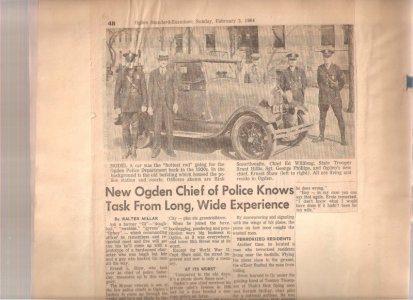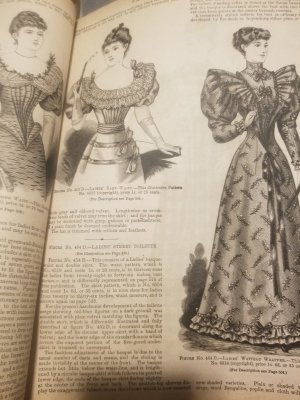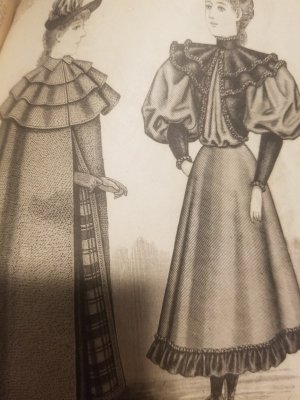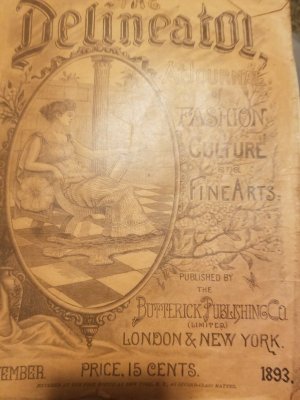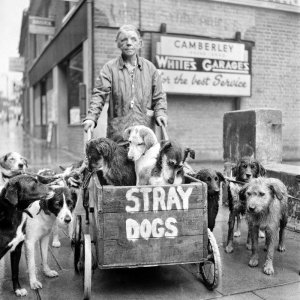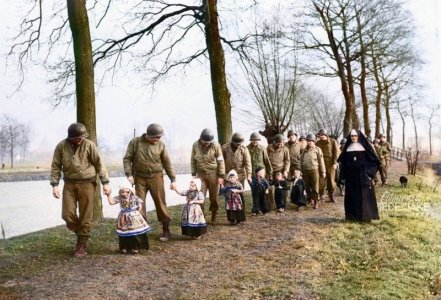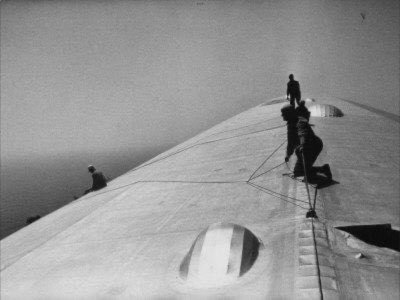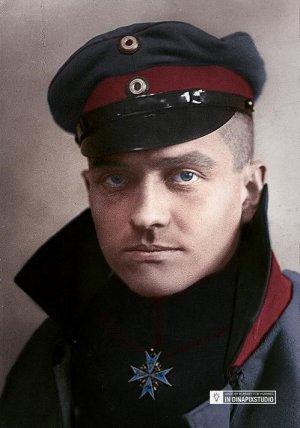You are using an out of date browser. It may not display this or other websites correctly.
You should upgrade or use an alternative browser.
You should upgrade or use an alternative browser.
History, anything goes, including pictures
- Thread starter mellowyellow
- Start date
RadishRose
SF VIP
- Location
- Connecticut, USA
sorry cannot read it.one of my newspapers
mellowyellow
Well-known Member
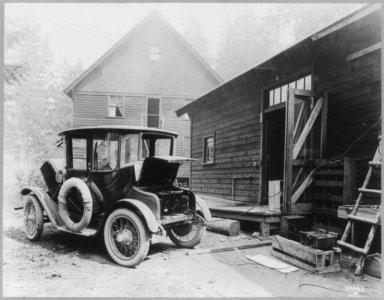
Electric car in a private charging station, USA 1919
What was the range of a 1917 electric car? The car had a range of between 40 and 65 miles (64-105 km) before the batteries had to be recharged. The car was smooth, quiet and easy to drive. Once the occupants were seated, all that was required to move off was to have the direction switch set to forward.
mellowyellow
Well-known Member
mellowyellow
Well-known Member
Pappy
Living the Dream
Paco Dennis
SF VIP
- Location
- Mid-Missouri
An aerial view of Exposition Universelle, held in 1900 in Paris.


jimintoronto
Well-known Member
My Father served in the Canadian Expeditionary Force during WW1, from October of 1915, to July of 1919 when he finally returned to Toronto. In early 1918, he was wounded. While recovering in hospital a Officer from his Division came through looking for men who had musical talent to join the Emma Gees, the concert troupe of the Canadian Machine Gun Corps. Dad had a natural tenor voice, and he ended up with the troupe as both the tenor soloist and the Master of Ceremonies at age 19. He stayed with the Emma Gees until the war ended in November of 1918, then he volunteered to stay behind for a further 6 months, to be a guard at a German POW camp in Belgium. For 6 months of VERY easy duty, he was paid a full year's wages. When he retuned to Toronto he used that money to buy a Pierce Arrow touring car, and he started the Toronto Veteran's Taxi Company. BY 1927 he owned 17 cabs and employed 35 drivers, all of whom were CEF veterans. He sold the company in 1928 and bought a 60 room hotel in down town Toronto. He lived a very good life. Here is a 1918 photo of the Emma Gees taken in a photo studio in France. Dad is the only man not in a stage costume. He is seated on the left side, wearing a suit and tie.
After the war, Dad kept on singing, but not professionally. JimB.

After the war, Dad kept on singing, but not professionally. JimB.

JonSR77
Senior Member
The American Revolution with Joanne Freeman - 25 lectures
Yale History Course online, free, on You Tube
By Joanne Freeman
Highly regarded historian who has advised the Presidential Administrations of both GOP and Dem Presidents…
https://en.wikipedia.org/wiki/Joanne_B._Freeman
Yale History Course online, free, on You Tube
By Joanne Freeman
Highly regarded historian who has advised the Presidential Administrations of both GOP and Dem Presidents…
https://en.wikipedia.org/wiki/Joanne_B._Freeman
mellowyellow
Well-known Member
My dad was in WW1 too Jim, and an instructor in WW2. He was wounded, sent to England to heal and returned to the front. He was 50 when I was born and never mentioned the war.My Father served in the Canadian Expeditionary Force during WW1, from October of 1915, to July of 1919 when he finally returned to Toronto. In early 1918, he was wounded. While recovering in hospital a Officer from his Division came through looking for men who had musical talent to join the Emma Gees, the concert troupe of the Canadian Machine Gun Corps. Dad had a natural tenor voice, and he ended up with the troupe as both the tenor soloist and the Master of Ceremonies at age 19. He stayed with the Emma Gees until the war ended in November of 1918, then he volunteered to stay behind for a further 6 months, to be a guard at a German POW camp in Belgium. For 6 months of VERY easy duty, he was paid a full year's wages. When he retuned to Toronto he used that money to buy a Pierce Arrow touring car, and he started the Toronto Veteran's Taxi Company. BY 1927 he owned 17 cabs and employed 35 drivers, all of whom were CEF veterans. He sold the company in 1928 and bought a 60 room hotel in down town Toronto. He lived a very good life. Here is a 1918 photo of the Emma Gees taken in a photo studio in France. Dad is the only man not in a stage costume. He is seated on the left side, wearing a suit and tie.
After the war, Dad kept on singing, but not professionally. JimB.
View attachment 217308
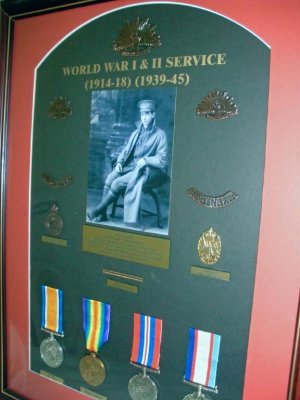
mellowyellow
Well-known Member

Long lines in Malaga to vote in the 1977 elections in Spain, the first democratic elections after the end of Francos dictatorship
https://www.diariosur.es/malaga/1977-20170615002609-nt.html
jimintoronto
Well-known Member
My Dad was quite open about talking to me about his experiences in WW1. I was born in 1946 from his second marriage, so as a teen ager growing up in the 1960's he and I spent hours discussing his past. JimB.My dad was in WW1 too Jim, and an instructor in WW2. He was wounded, sent to England to heal and returned to the front. He was 50 when I was born and never mentioned the war.
View attachment 217867
Paco Dennis
SF VIP
- Location
- Mid-Missouri
The Great Wall of China

"The Great Wall of China is an ancient series of walls and fortifications, totaling more than 13,000 miles in length, located in northern China. Perhaps the most recognizable symbol of China and its long and vivid history, the Great Wall was originally conceived by Emperor Qin Shi Huang in the third century B.C. as a means of preventing incursions from barbarian nomads. The best-known and best-preserved section of the Great Wall was built in the 14th through 17th centuries A.D., during the Ming dynasty. Though the Great Wall never effectively prevented invaders from entering China, it came to function as a powerful symbol of Chinese civilization’s enduring strength.
Though the beginning of the Great Wall of China can be traced to the fifth century B.C., many of the fortifications included in the wall date from hundreds of years earlier, when China was divided into a number of individual kingdoms during the so-called Warring States Period.
Around 220 B.C., Qin Shi Huang, the first emperor of a unified China under the Qin Dynasty, ordered that earlier fortifications between states be removed and a number of existing walls along the northern border be joined into a single system that would extend for more than 10,000 li (a li is about one-third of a mile) and protect China against attacks from the north.
Construction of the “Wan Li Chang Cheng,” or 10,000-Li-Long Wall, was one of the most ambitious building projects ever undertaken by any civilization. The famous Chinese general Meng Tian initially directed the project, and was said to have used a massive army of soldiers, convicts and commoners as workers.
Made mostly of earth and stone, the wall stretched from the China Sea port of Shanhaiguan over 3,000 miles west into Gansu province. In some strategic areas, sections of the wall overlapped for maximum security (including the Badaling stretch, north of Beijing, that was later restored during the Ming Dynasty).
From a base of 15 to 50 feet, the Great Wall rose some 15-30 feet high and was topped by ramparts 12 feet or higher; guard towers were distributed at intervals along it.
Did you know? When Emperor Qin Shi Huang ordered construction of the Great Wall around 221 B.C., the labor force that built the wall was made up largely of soldiers and convicts. It is said that as many as 400,000 people died during the wall's construction; many of these workers were buried within the wall itself."
https://www.history.com/topics/ancient-china/great-wall-of-china

"The Great Wall of China is an ancient series of walls and fortifications, totaling more than 13,000 miles in length, located in northern China. Perhaps the most recognizable symbol of China and its long and vivid history, the Great Wall was originally conceived by Emperor Qin Shi Huang in the third century B.C. as a means of preventing incursions from barbarian nomads. The best-known and best-preserved section of the Great Wall was built in the 14th through 17th centuries A.D., during the Ming dynasty. Though the Great Wall never effectively prevented invaders from entering China, it came to function as a powerful symbol of Chinese civilization’s enduring strength.
Qin Dynasty Construction
Though the beginning of the Great Wall of China can be traced to the fifth century B.C., many of the fortifications included in the wall date from hundreds of years earlier, when China was divided into a number of individual kingdoms during the so-called Warring States Period.
Around 220 B.C., Qin Shi Huang, the first emperor of a unified China under the Qin Dynasty, ordered that earlier fortifications between states be removed and a number of existing walls along the northern border be joined into a single system that would extend for more than 10,000 li (a li is about one-third of a mile) and protect China against attacks from the north.
Construction of the “Wan Li Chang Cheng,” or 10,000-Li-Long Wall, was one of the most ambitious building projects ever undertaken by any civilization. The famous Chinese general Meng Tian initially directed the project, and was said to have used a massive army of soldiers, convicts and commoners as workers.
Made mostly of earth and stone, the wall stretched from the China Sea port of Shanhaiguan over 3,000 miles west into Gansu province. In some strategic areas, sections of the wall overlapped for maximum security (including the Badaling stretch, north of Beijing, that was later restored during the Ming Dynasty).
From a base of 15 to 50 feet, the Great Wall rose some 15-30 feet high and was topped by ramparts 12 feet or higher; guard towers were distributed at intervals along it.
Did you know? When Emperor Qin Shi Huang ordered construction of the Great Wall around 221 B.C., the labor force that built the wall was made up largely of soldiers and convicts. It is said that as many as 400,000 people died during the wall's construction; many of these workers were buried within the wall itself."
https://www.history.com/topics/ancient-china/great-wall-of-china
Pappy
Living the Dream
mellowyellow
Well-known Member
JonSR77
Senior Member
Great pictures and wonderful history! Thank you so much!View attachment 217868
Long lines in Malaga to vote in the 1977 elections in Spain, the first democratic elections after the end of Francos dictatorship
https://www.diariosur.es/malaga/1977-20170615002609-nt.html
JonSR77
Senior Member
The Leg of Civil War Major General, Daniel Sickles...
https://www.medicalmuseum.mil/micrograph/index.cfm/posts/2021/maj_gen_daniel_e_sickles
+++
As if that was not strange enough, he was also known as the first person to use the insanity defense to be acquitted of murder!
"Born to a wealthy family in New York City, Sickles was involved in a number of scandals, most notably the 1859 homicide of his wife's lover, U.S. Attorney Philip Barton Key II, whom Sickles gunned down in broad daylight in Lafayette Square, across the street from the White House. He was acquitted after using temporary insanity as a legal defense for the first time in United States history."
https://en.wikipedia.org/wiki/Daniel_Sickles
https://www.medicalmuseum.mil/micrograph/index.cfm/posts/2021/maj_gen_daniel_e_sickles
+++
As if that was not strange enough, he was also known as the first person to use the insanity defense to be acquitted of murder!
"Born to a wealthy family in New York City, Sickles was involved in a number of scandals, most notably the 1859 homicide of his wife's lover, U.S. Attorney Philip Barton Key II, whom Sickles gunned down in broad daylight in Lafayette Square, across the street from the White House. He was acquitted after using temporary insanity as a legal defense for the first time in United States history."
https://en.wikipedia.org/wiki/Daniel_Sickles
JonSR77
Senior Member
George Washington - Great Dancer?
Did Washington really love to dance? Emphatically, yes. Washington once described dancing as “so agreeable and innocent an amusement.” First-hand accounts say he was extremely good at it – and was always quite the center of attention.
https://www.mountvernon.org/george-... really love to,quite the center of attention.
Did Washington really love to dance? Emphatically, yes. Washington once described dancing as “so agreeable and innocent an amusement.” First-hand accounts say he was extremely good at it – and was always quite the center of attention.
https://www.mountvernon.org/george-... really love to,quite the center of attention.
JonSR77
Senior Member
General Grant - Excellent Horseman
CSA General James Longstreet
Grant at West Point: “In horsemanship, however, he was noted as the most proficient in the Academy. In fact, rider and horse held together like the fabled centaur...”
Frederick Grant, son of General Grant
“My father was the best horseman in the army, he rode splendidly and always on magnificent and fiery horses when possible to obtain one. He preferred to ride the most unmanageable mount, the largest and the most powerful one. Oftentimes I saw him ride a beast that none had approached. This is another instance of his physical strength.”
https://www.granthomepage.com/grantequestrian.htm
Grant the Equestrian
General Grant loved horses and was probably the greatest Equestrian in US history. He was a fearless rider with phenomenal endurance and speed.CSA General James Longstreet
Grant at West Point: “In horsemanship, however, he was noted as the most proficient in the Academy. In fact, rider and horse held together like the fabled centaur...”
Frederick Grant, son of General Grant
“My father was the best horseman in the army, he rode splendidly and always on magnificent and fiery horses when possible to obtain one. He preferred to ride the most unmanageable mount, the largest and the most powerful one. Oftentimes I saw him ride a beast that none had approached. This is another instance of his physical strength.”
https://www.granthomepage.com/grantequestrian.htm
JonSR77
Senior Member
General Grant’s Temper at the Mistreatment of Horses
An officer related that once, when Rawlins accompanied General Grant, they approached a river crossing and observed a teamster who was cursing and beating his team of horses, using the butt end of a whip. Grant leaped from his horse, grabbed the teamster by the throat and demanded; “What does this conduct mean, stop beating those horses.” The teamster obviously didn’t comprehend who he was dealing with, replied; “Who’s driving this team anyhow, you or me?” Grant became totally unhinged and addressed the villain; “I’ll show you,” and summoned one of his staff officers, and ordered, “Take this man in charge and have him tied to a tree for six hours as punishment for his brutality.” The General and his entourage rode on, knowing that the teamster would think twice before mistreating any horses, in the future.
https://www.civilwarbummer.com/grants-temper-or-the-mistreatment-of-horses-or-ladies/
Pappy
Living the Dream
mellowyellow
Well-known Member
Pappy
Living the Dream
Paco Dennis
SF VIP
- Location
- Mid-Missouri


